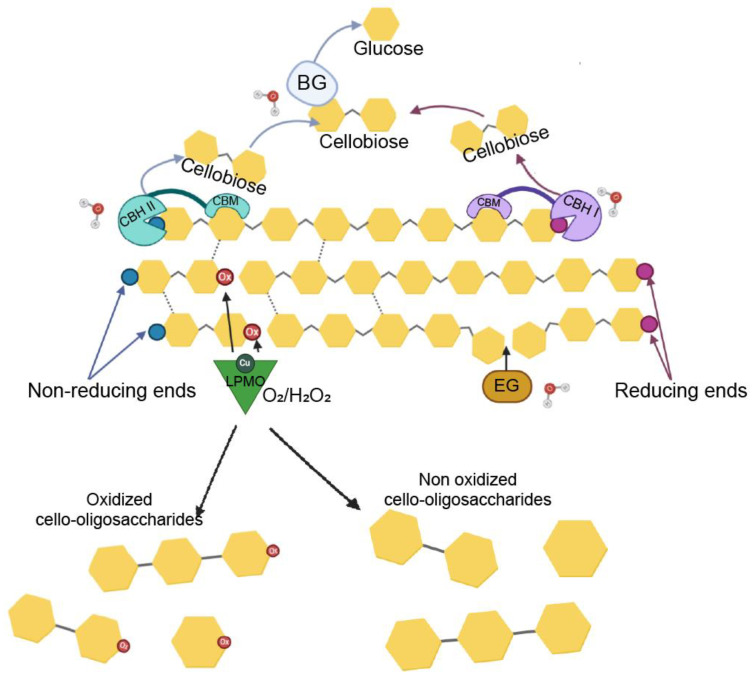Figure 1.
Schematic representation of enzymes acting in the deconstruction of cellulose. LPMOs (C1-oxidizing: EC 1.14.99.54; C4-oxidizing: EC1.14.99.56) use either O2 or H2O2 to hydrolyze cellulose chains in the crystalline regions, making the cellulose more accessible for the action of hydrolytic enzymes. Endoglucanases (EG; EC 3.2.1.4) hydrolyze the glycosidic bond in the amorphous regions of the cellulose chains, generating new reducing and non-reducing ends. Cellobiohydrolases (EC 3.2.1.91) processively release cellobiose units from the reducing (CBH I) and non-reducing (CBH II) ends of the cellulose chains. Cellobiose is then converted into glucose units by β-glucosidases (BG; EC 3.2.1.21). Ox, oxidated glucose moiety; CBM, carbohydrate binding module.

